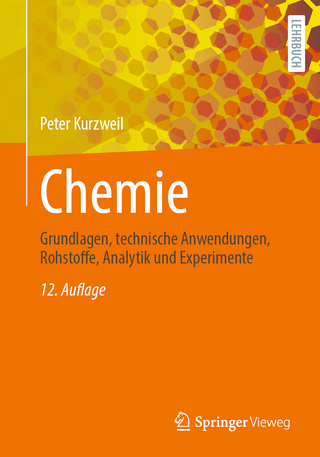
Electrochemical Power Sources: Fundamentals, Systems, and Applications
Elsevier Science Ltd (Verlag)
978-0-444-63777-2 (ISBN)
The manufacturers of cells and batteries have strongly reduced the hazard probability by a number of measures. However, absolute safety of the Li system is not given as multiple incidents in consumer electronics have shown.
Jürgen Garche, graduated in chemistry at the Dresden University of Technology (DTU) in Germany in 1967. He was awarded his PhD in theoretical electrochemistry in 1970 and his habilitation in applied electrochemistry in 1980 from the same university. He worked at the DTU in the Electrochemical Power Sources Group for many years in different projects, mainly related to conventional batteries, before he moved 1991 to the Centre for Solar Energy and Hydrogen Research (ZSW) in Ulm, where he was, until 2004, the Head of the Electrochemical Energy Storage and Energy Conversion Division. He was Professor of Electrochemistry at Ulm University and Guest Professor at Shandong University – China, 2005, Sapienca University Roma - Italy, 2009, 2013, 2016, and 2023, TUM-CREATE – Singapore, 2014, 2015, 2016- 2016, Dalian Institute of Chemical Physics - China, 2016, CNR Institute for Advanced Energy Technologies, Messina - Italy, 2019. After he retired from the ZSW he founded in 2004 the consulting firm Fuel Cell and Battery Consulting (FCBAT). Since 2015 he is senior professor at Ulm University. He has published more than 300 papers, 10 patents, and 11 books, among others as editor-in-chief of the first edition of Encyclopedia of Electrochemical Power Sources. He is listed in “World’s most Influential Scientific Minds by Thomas Reuters (2014) and in the book “Profiles of 93 Influential Electrochemists (2015). Dr. Klaus Brandt has over 35 years of experience in research, development and manufacturing of lithium and lithium ion batteries. He co-founded Moli Energy in Canada which produced the first rechargeable battery with a lithium metal anode. In the field of lithium ion batteries, he worked in various management positions for battery companies like Varta and Duracell. His last industrial position was with Clariant which produced cathode and anode active materials for lithium ion batteries.
1. General Battery Safety Considerations 2. General Overview of Non-Lithium Battery Systems and their Safety Issues 3. Overview of Rechargeable Lithium Battery Systems 4. Safety Aspects of Lithium Primary Batteries 5. Safety of Secondary-Lithium Batteries: An Introduction 6. General Overview of Li-Secondary Battery Safety Issues 7. Lithium-Secondary Cell: Sources of Risks and Their Effects 8. Managing Safety Risk by Manufacturers 9. Managing of Risks by Users and Stakeholders 10. Safety Tests for Li-Secondary Batteries 11. Li-Secondary Battery: Special Risks 12. Li-Secondary Battery: Damage Control
| Erscheinungsdatum | 05.10.2018 |
|---|---|
| Verlagsort | Oxford |
| Sprache | englisch |
| Maße | 191 x 235 mm |
| Gewicht | 1460 g |
| Themenwelt | Naturwissenschaften ► Chemie ► Technische Chemie |
| Technik ► Umwelttechnik / Biotechnologie | |
| ISBN-10 | 0-444-63777-X / 044463777X |
| ISBN-13 | 978-0-444-63777-2 / 9780444637772 |
| Zustand | Neuware |
| Haben Sie eine Frage zum Produkt? |
aus dem Bereich


